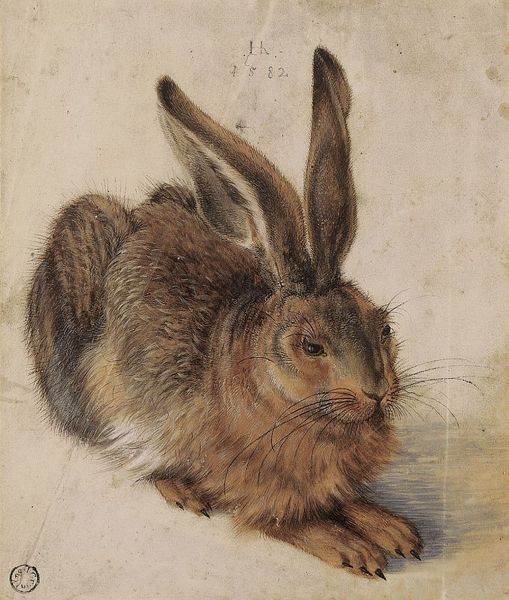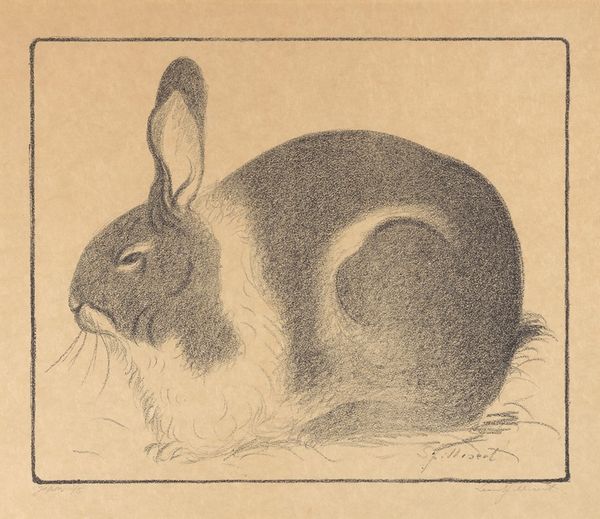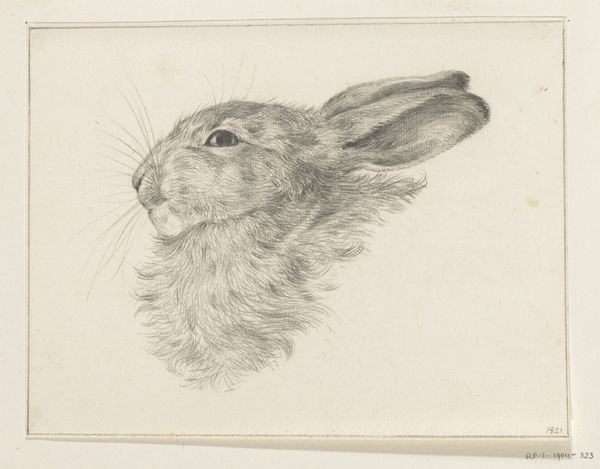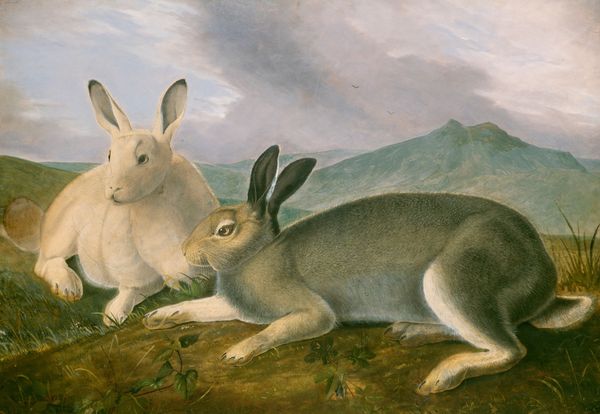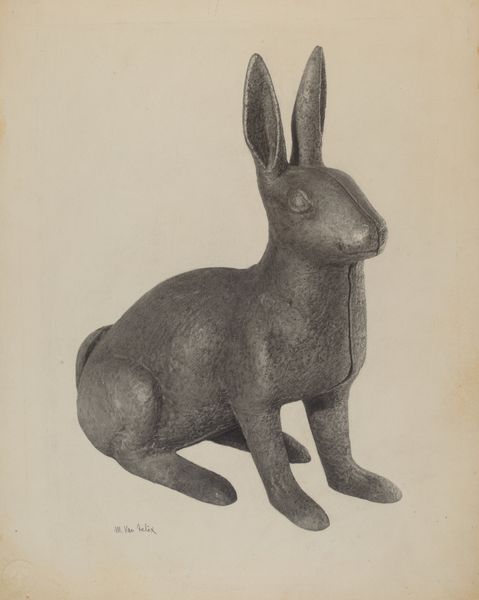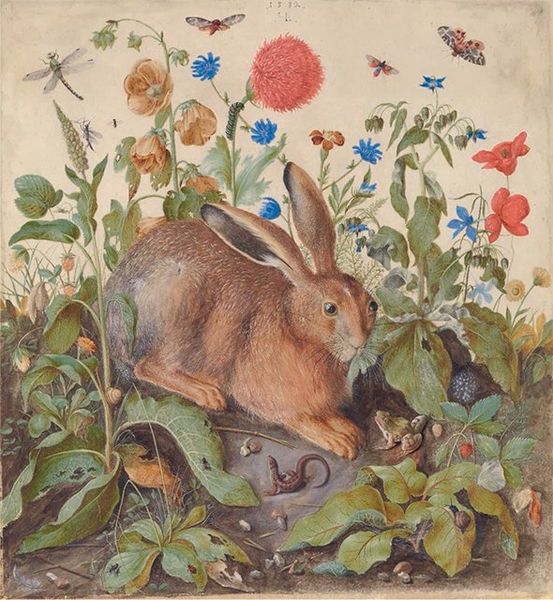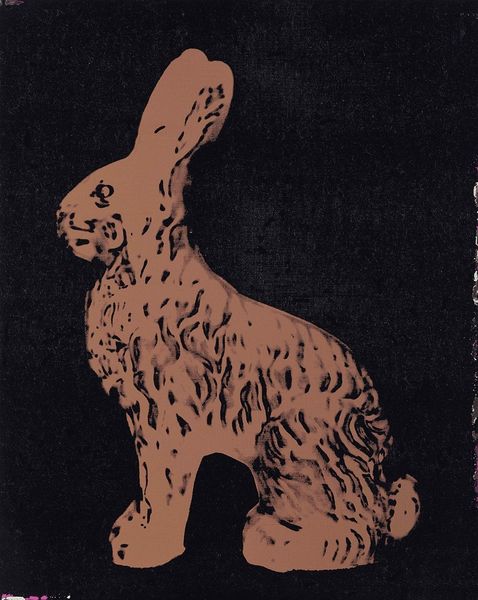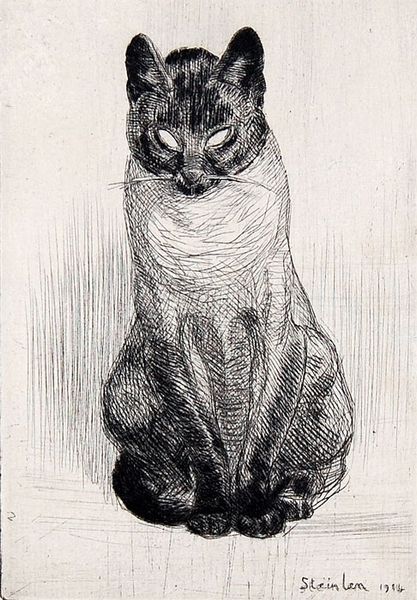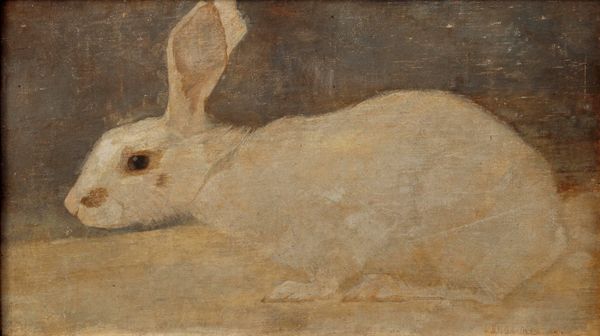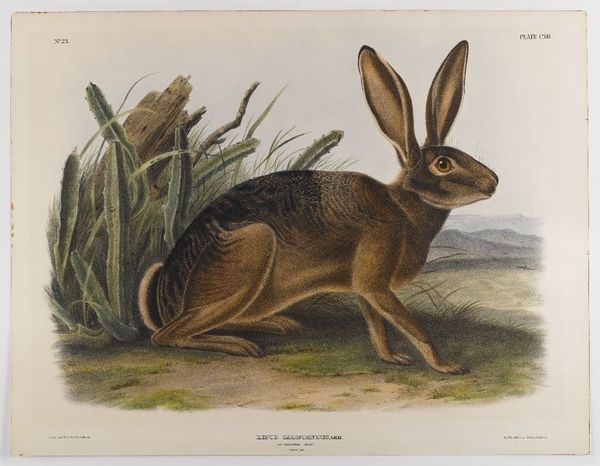
drawing, paper, pencil
#
drawing
#
animal
#
pencil sketch
#
paper
#
11_renaissance
#
oil painting
#
portrait reference
#
pencil drawing
#
pencil
#
animal portrait
#
northern-renaissance
#
realism
Copyright: Public domain
Curator: Here we have Albrecht Dürer's "Hare," a work rendered with pencil on paper around 1528, during the height of the Renaissance. Editor: It’s quite striking! Such realism… almost photographically detailed. It’s intensely focused, though somehow conveys a quiet stillness. Curator: Dürer's technique really shines. Notice the meticulous layering of lines to create depth and texture. One can almost feel the soft fur of the animal, the result of countless hours of labor and observation. This raises the question of the status of animal portraiture at the time, which was lower in the painting hierarchy. Editor: The hare… it appears alert but unhurried. The way it looks back reminds me of the symbolic meaning attached to hares across cultures – fertility, yes, but also vulnerability and even rebirth, perhaps echoing religious themes of the time. It is charged with latent energy, with life force, I would say. Curator: Interesting interpretation! From a purely material perspective, I'm fascinated by the social circumstances around producing a hyper-realistic naturalistic study like this in 16th-century Nuremberg, a major commercial center. Dürer’s decision to painstakingly capture nature invites a critical inquiry into the role of craft, labor, and commodity in an era undergoing massive economic change. The availability of paper and pencils itself marks an interesting stage in industrialization. Editor: Certainly, but what about this hare’s piercing gaze? Is it mere realism, or a conscious attempt to invest this animal with some greater significance? Rabbits as symbols occur in various myths, even pre-Christian ones. Given the detailed rendering, doesn't this precise record add some mystical quality? Curator: I find that claim of 'mystical quality' unfounded but I do appreciate the technical accomplishment here! But, perhaps we see different aspects precisely *because* of his focus on pure technical skill... capturing reality for study’s sake alone. Maybe we ought not overlay more symbolism on this object? Editor: Maybe, but to me, this hare holds within it not just technical skill, but a spark, a story silently told through centuries. I would say that the beauty and endurance of such stories lies within its reception. Curator: Well, considering Dürer's popularity now, I suppose it makes sense to account for interpretations made for centuries after its creation. Editor: Indeed. Art evolves in meaning through different interactions, perhaps much like evolution for that small animal.
Comments
No comments
Be the first to comment and join the conversation on the ultimate creative platform.

